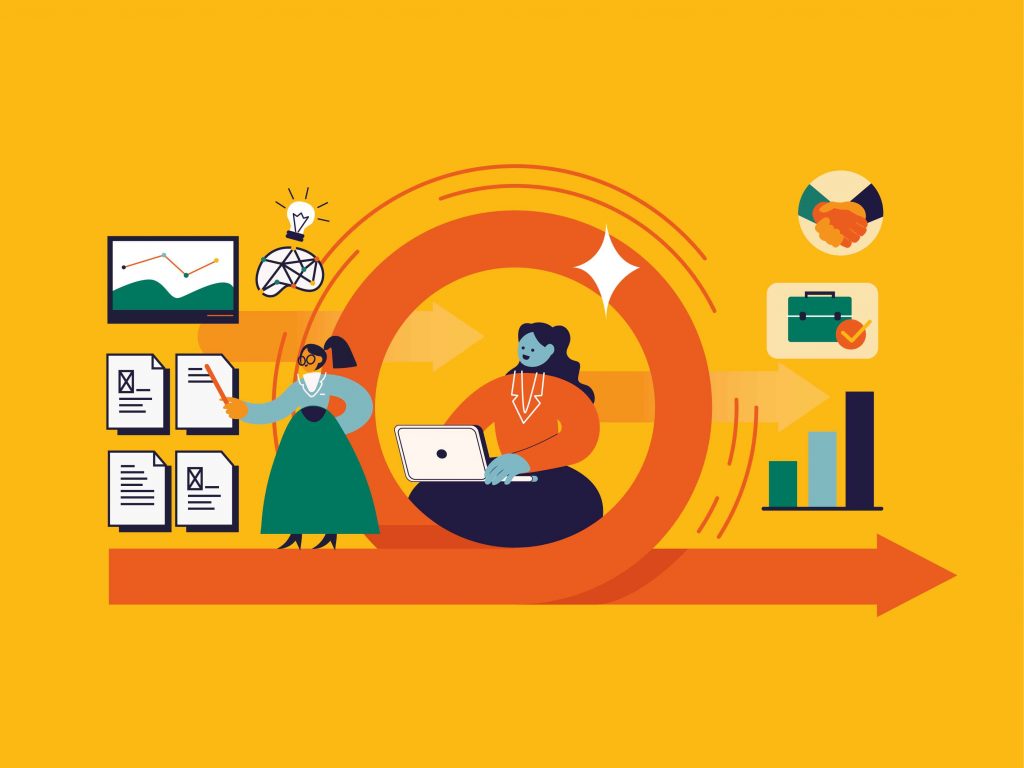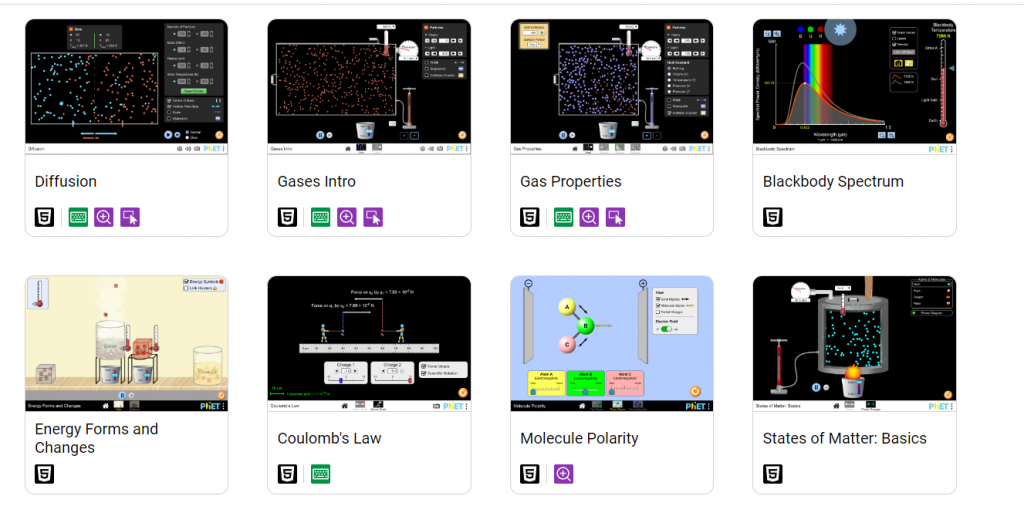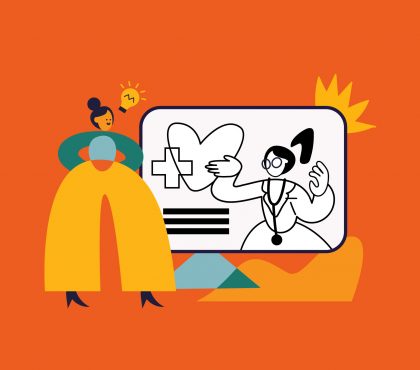The use of animation in education is very popular these days. Most teachers, and that includes those who teach higher education, look to it as a way to connect to a more tech-savvy generation of learners. But what exactly do you use animation for? What techniques are best for your subject? When should you use animation? Well, don’t worry, because today we will take you through the best practices that you can apply to your course!
How Animation Enhances Learning for Adults
While often seen as a tool for engaging children, animation shouldn’t be underestimated when it comes to adult education. Adults can also benefit from visual learning methods, as they can become just as fatigued by text-heavy materials. Animation is an ideal way to simplify complex information and keep adult learners engaged.
For adult learners, animation can effectively:
- Demonstrate abstract concepts
- Bring case studies to life
- Promote flexible learning
- Reduce learning barriers for individuals with dyslexia
Let’s explore how each of these benefits plays out in 4 practices for animation in education below.
1. To Demonstrate Abstract And Complex Concepts
Whether in natural or social sciences, there are concepts that are so much more understandable if they could be explained visually for the students. We’ll describe some cases below!
Natural Science
In subjects like Physics or Engineering, many concepts are either too small or too big for the human eye to observe. For example, how can you see the reaction of atoms or the death of a star? How do you show that a building must have certain support structures to stand? These are things that cannot be better demonstrated than through visualization.
Here is a great example of the use of animation in education. As part of an Engineering course at the University of New South Wales, the animated video illustrates the formation of metamorphic rocks on the ocean floor. In other words, it’s a process that can’t be observed due to the length of time it takes for it to occur in full.
Such application of animation in higher education is becoming very common. The University of Colorado Boulder’s Chemistry Department has a catalog of animated resources that are also interactive. Students can perform certain actions and see the effects, thus better understanding the concept.
Social Science
Similarly, in subjects like Business, Economics, and Political Science some theories and concepts can be better explained using animated visuals. Rather than drawing it or producing a still diagram, wouldn’t a moving image of how income moves in the economy be much more engaging?
This is a simple but good example of how animation can explain a big economic concept in a colorful and fun way. In being able to link how the money moves, students can better remember the concept of the circular flow of income. Moreover, this method is probably more effective than just using words to explain.
Finance and Accounting
For this area of study, concepts are very much number-based. Otherwise, the subjects are quite complicated, and so can be confusing and overwhelming. To help with that, animated clips can present mathematical processes in a step-by-step method to avoid confusion. If the clips are made available after classes, students can also go back over it if they still are not sure!
Furthermore, to make a subject so heavy on numbers more interesting, animations can provide little breaks in class. Particularly, short videos like the one below can explain the situation in which these processes can be used. As a result, the subject becomes more engaging!
2. To Bring Case Studies to Life
Besides big concepts, subjects such as Business, Marketing, or Law base a lot of learning on case studies. And here’s where you may see another plus point of the use of animation in education.
Case studies are supposed to bring real-life applications into the classroom. However, due to their traditionally text-based nature, case studies can be a bore to go through. Because of that, students may find these examples to be not connected to them, or even abstract. To prevent this negative effect, animation can be used to blow life into case studies by visualizing the situation.
This doesn’t mean you have to animate everything. Rather than displaying the whole case study via animation, you can take a blended approach. You can use a snappy, short video as a break from texts or as an introduction to your lecture to capture attention. Once students have had a general idea of the case, you can go on with texts for more in-depth discussions.
For instance, this video shows how it could work. You can use this short clip as an introduction to Business Management, as it talks about ways to improve production efficiency. By applying story-telling techniques, the animation creates a relevant scenario where theories can be applied. In seeing and realizing how theories work in practice, students can better take in the knowledge.
3. To Encourage Flexible Learning
Moving on, we have flexible learning. Thanks to the internet and the smartphone, a lot of resources and ways of studying are available to students nowadays.
Considering this, using animation for education takes on another role. That is to say, it encourages learners to learn whenever and expand their learning experiences. Firstly, short animated videos are perfect for revision for the following reasons:
- There can be a combination of texts in bullet points, images, and audio effects
- Not a lot of attention is required, unlike reading pure texts
- Students can watch videos whenever, wherever
| Some more information about available animation tools: >> Best educational animation software for beginners |
Additionally, such a video can remind students of how fun learning can be. It may be brought to their attention that there are plenty of online resources like that to be discovered! So they are motivated to learn more through finding out more materials that suit their interests. Because of this, the learning process becomes more flexible and personal, and therefore more effective.
4. To Reduce The Learning Difficulties of Dyslexia
Five to fifteen percent of learners worldwide face difficulties reading and processing textual information. This is due to a condition called dyslexia that makes learners take more time and effort to work through text-based courses.
So using animation in education is ideal as it helps such learners by using more visual and audio teaching aids. This perfect combination makes things easier to understand and shortens learning time. Even better, the animated visuals will not only aid dyslexic learners but also all the other students as well.

Conclusion
The use of animation in education has proven to be an effective strategy for engaging students of all ages. By making abstract concepts more tangible and lessons more interactive, animation fosters deeper understanding and retention. Whether used to teach young children or adult learners, its versatility allows educators to break through traditional learning barriers and create more inclusive, dynamic learning environments.
Read further:
- Developing animations for education: where to start?
- What type of animation works best for you in-class teaching?

Sean Bui, the founder and creative director of F.Learning Studio, is a respected leader in the e-learning and multimedia production industry. With over 10 years of experience, he has dedicated his career to helping organizations create engaging and impactful learning experiences.
Under his leadership, F.Learning Studio has grown into a trusted partner for organizations in the education, healthcare, and corporate training sectors, producing over 2,000 minutes of educational animation.









